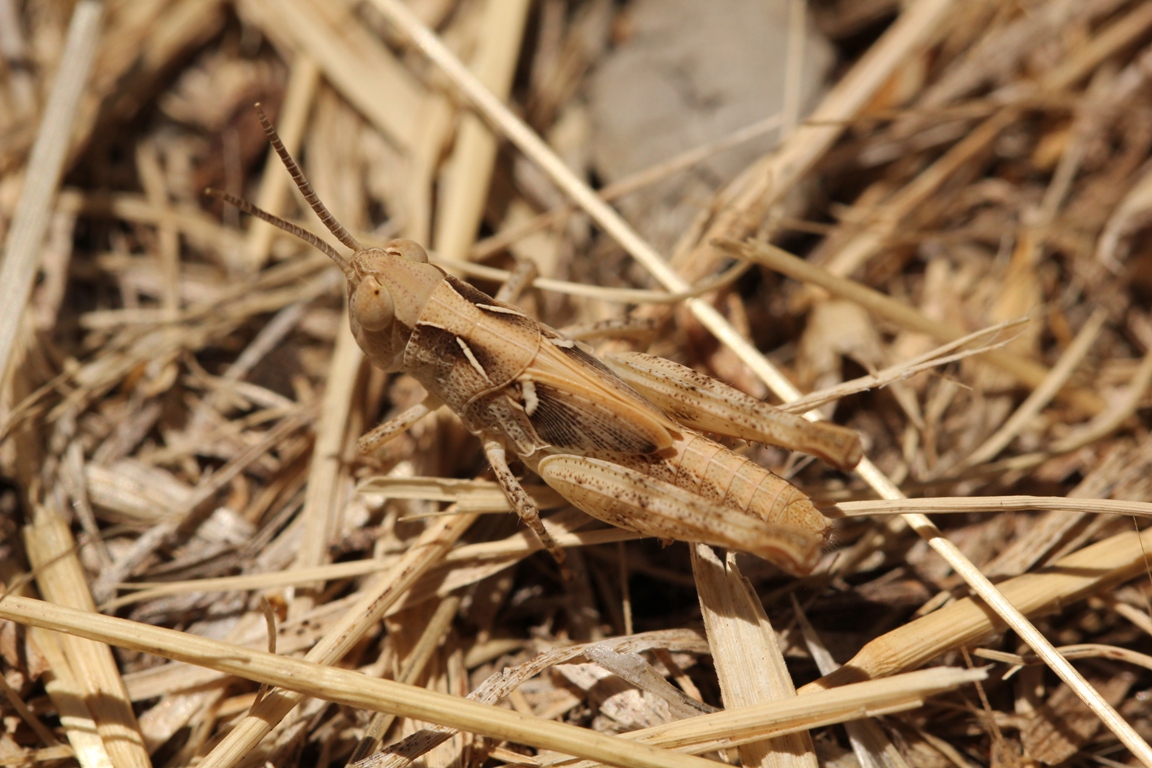
By Shafiya Hussein, Grains Biosecurity Officer, South Australia
South Australian growers are advised to monitor their farms this spring for Australian plague locusts, Chortoicetes terminifera, after increased activity was detected in March this year.
In late January 2022, a tropical summer storm dumped heavy rain in some of the Northern South Australian pastoral districts. Combined with warm temperatures, it created the ideal conditions for locusts to feed, breed and lay eggs.
Locusts are a declared pest under Section 4 of the Plant Health Act 2009. Locusts can infest large areas, form massive swarms, migrate hundreds of kilometres, reproduce in significant numbers and are detrimental to all agricultural sectors.
The Australian plague locust adult can be distinguished from other species by the large dark spot on the tip of the hindwings and distinctive scarlet hindleg shanks. Adult body colour can vary between grey, brown and green.
The best way to manage locusts is to act early to prevent them from developing into swarms. Surveillance is crucial for early detection and provides a tool for effective management decisions to control populations.
The primary responsibility for locust control is with landowners. If landowners can control the nymph/hoppers population as they form into bands, swarms can be prevented from developing.
The Department of Primary Industries and Regions (PIRSA) provides timely and relevant information to landowners to assist with management decisions.
PIRSA has surveyed locust activity on pastoral land in conjunction with The Australian Plague Locust Commission (APLC). The surveys have shown adult locusts migrate southwards to lay overwintering eggs.
The Australian plague locust has three life cycle stages: egg, hopper, and adult. They can live from 5-6 months, and complete two generations in a year. Each female can oviposit 150 eggs in the soil at 2-10cm depth. Frothy plugs protect egg pods in the ground.
Due to cool temperatures, development of eggs laid in March and April is delayed until warmer weather returns. However, nymphs/hoppers will develop in spring for the second generation of feeding, breeding and egg depositing.
Growers are advised that seed pickling or treatment will not prevent locusts foraging on seedlings. Ground or aerial insecticide control at the hopper stage provides the most effective control.
It is imperative that Australian Pesticides and Veterinary Medicines Authority (APVMA) approved chemicals and recommended dosages are applied by landowners or authorised chemical operators to meet requirements for National Vendor Declaration (NVD) certification, withholding periods (WHP) for fodder, export slaughter intervals (ESI) and export grazing intervals (EGI).
Apart from registered insecticides for control of locusts such as carbaryl (carbamats-group1A), fenitrothion and diazinon (organophosphates group 1B)), APVMA has dispensed permits for selected synthetic pyrethroids (PER 10922, PER10928) and chlorpyrifos and maldison (PER 13642). These permits expire in June 2025 and are available from www.apvma.gov.au/permits.
For organic growers and environmentally sensitive areas, a naturally occurring fungi metarhizium anisopliae can destroy 70-90% of hoppers within 14-20 days. The bioinsecticide is commercially known as Green Guard®.
Producers must comply with state and territory laws governing the use of chemicals.
South Australians are requested to report significant locust activities to PIRSA on the emergency plant pest hotline 1800 084 881. Alternatively, locust activity can be reported directly to APLC on 1800 635 962.
For more information about the Australian plague locust, visit PIRSA website and the APLC page or contact Shafiya Hussein, South Australia’s Grains Biosecurity Officer on shafiya.hussein@sa.gov.au